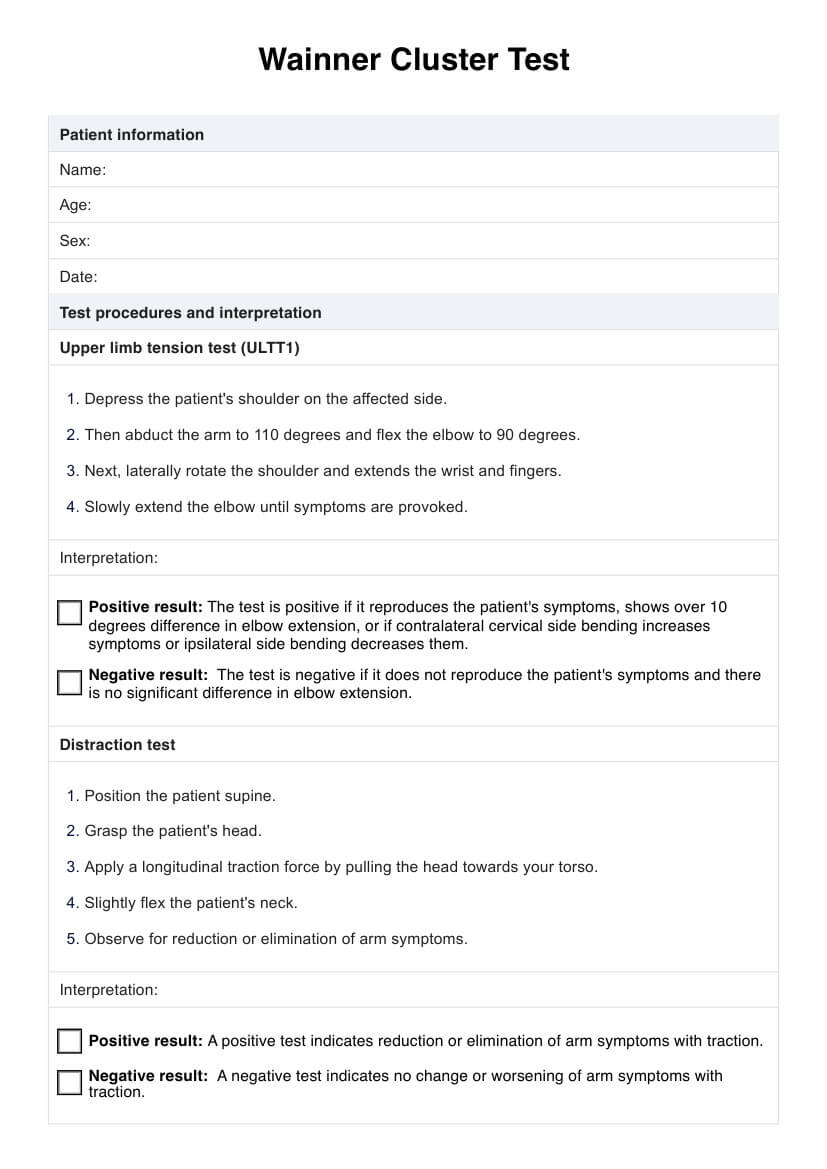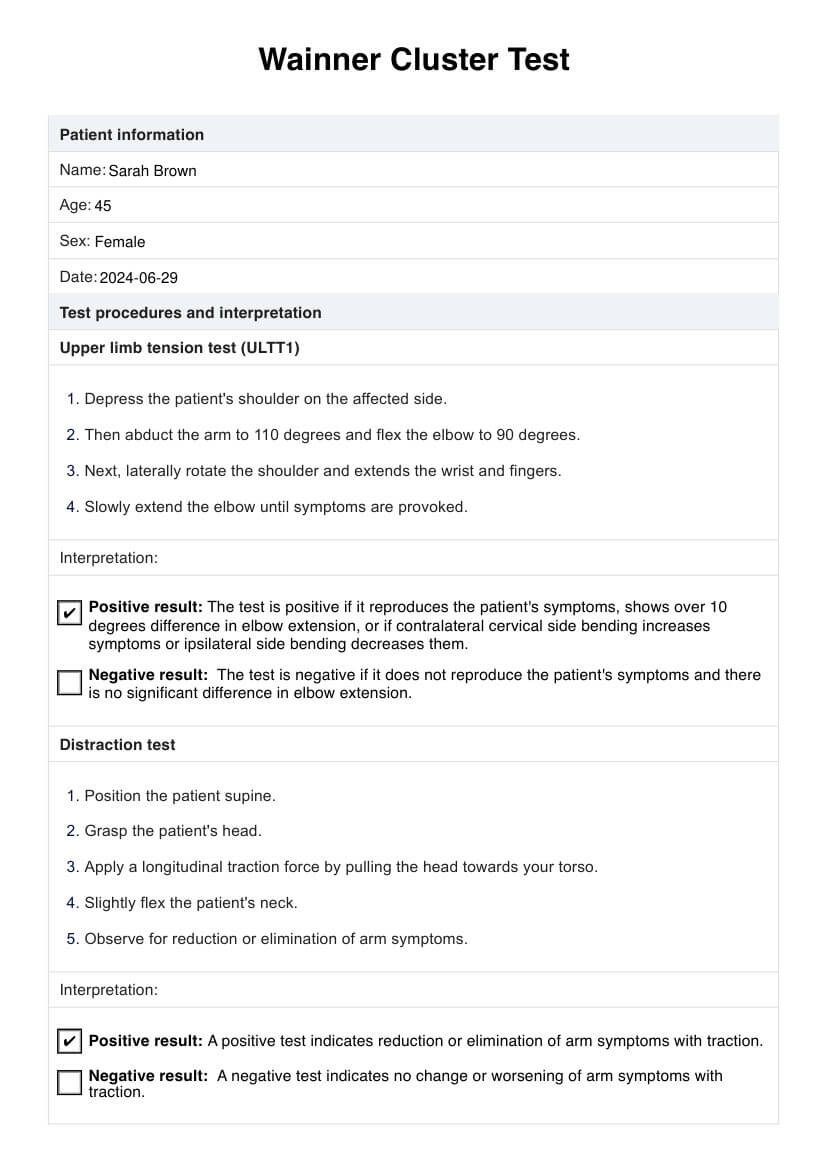Wainner Cluster Test
Learn about the Wainner Cluster Test for diagnosing cervical radiculopathy and its procedures, and download a free PDF example.


What is cervical radiculopathy?
Cervical radiculopathy is caused by the compression or irritation of nerve roots in the cervical spine (neck). It leads to pain, numbness, or weakness radiating into the shoulders, arms, and hands. Common causes include herniated discs, bone spurs, and degenerative disc disease. Risk factors include aging, poor posture, and repetitive neck movements.
Symptoms often include sharp or burning neck pain, tingling or numbness in the arms or fingers, and muscle weakness in the upper extremities. For accurate diagnosis, clinicians use the Wainner Cluster Test, a clinical prediction tool that combines multiple test items to differentiate cervical radiculopathy from other conditions like carpal tunnel syndrome.
How to diagnose cervical radiculopathy
Diagnosing cervical radiculopathy involves a thorough clinical examination. One effective method of diagnosis is the Wainner Cluster Test, which includes several physical tests, such as Spurling's Test and the distraction test.
These tests help identify and assess the presence of nerve root compression. The Wainner Cluster Test combines multiple test items to enhance their reliability and diagnostic accuracy, offering a comprehensive approach to determining cervical radiculopathy. Accurate diagnosis is crucial for planning effective treatment and management strategies.
Wainner Cluster Test Template
Wainner Cluster Test Template
What is the Wainner Cluster Test?
The Wainner Cluster Test combines physical examination techniques used to diagnose cervical radiculopathy. It includes four primary tests: Spurling's test, the distraction test, the upper limb tension test, and the cervical rotation test. Each test targets specific aspects and symptoms of nerve root compression, and their combined test results provide a more accurate diagnosis than any single test alone.
How to perform the Wainner Cluster Test
Performing the Wainner Cluster Test involves several steps:
- Spurling's test: With the patient seated, the examiner applies downward pressure on the head while tilting it toward the affected side. A positive result is indicated by pain radiating into the arm.
- Distraction test: The examiner gently lifts the patient's head to alleviate cervical spine pressure. A reduction in pain signifies a positive outcome.
- Upper limb tension test (ULTT1): The patient's shoulder on the affected side is depressed, the arm is abducted to 110 degrees, and the elbow is flexed to 90 degrees. The shoulder is then laterally rotated, and the wrist and fingers are extended. The elbow is slowly extended until symptoms are provoked. A positive test is marked by the reproduction of symptoms in the affected area.
- Cervical rotation test: The patient's head is rotated to one side, and limited rotation or pain suggests nerve root compression.
Achieving three positive results out of four tests suggests a positive likelihood ratio of 6.1. If all four tests yield positive results, this ratio increases significantly to 30.3 (Wainner et al., 2003).
To get started, you can download the Wainner Cluster Test template to ensure you perform the test accurately.
References
Wainner, R. S., Fritz, J. M., Irrgang, J. J., Boninger, M. L., Delitto, A., & Allison, S. (2003). Reliability and diagnostic accuracy of the clinical examination and patient self-report measures for cervical radiculopathy. Spine, 28(1), 52-62.
Commonly asked questions
The Wainner Cluster Test is a reliable diagnostic tool validated through clinical research. Its combination of multiple tests increases the reliability and diagnostic accuracy of identifying cervical radiculopathy. When utilized correctly, this test cluster provides a robust method for clinicians to diagnose and manage this condition effectively.
The Wainner Cluster Test demonstrates high diagnostic accuracy, particularly when multiple tests within the cluster yield positive results. This combined approach significantly enhances the likelihood ratio, reducing the chances of both false negatives and false positives. The test's sensitivity and specificity rates ensure a thorough assessment, guiding appropriate treatment plans.
If your Wainner Cluster Test results are negative but symptoms persist, consider further diagnostic testing, such as imaging studies, to identify other potential causes of your symptoms.







































































































